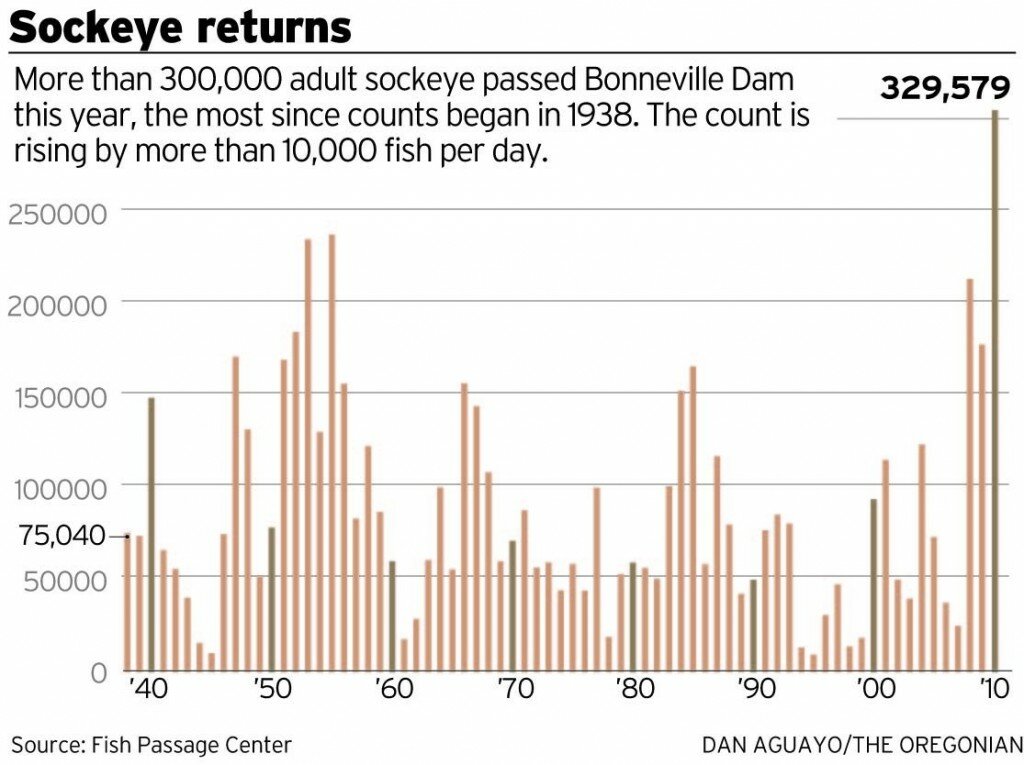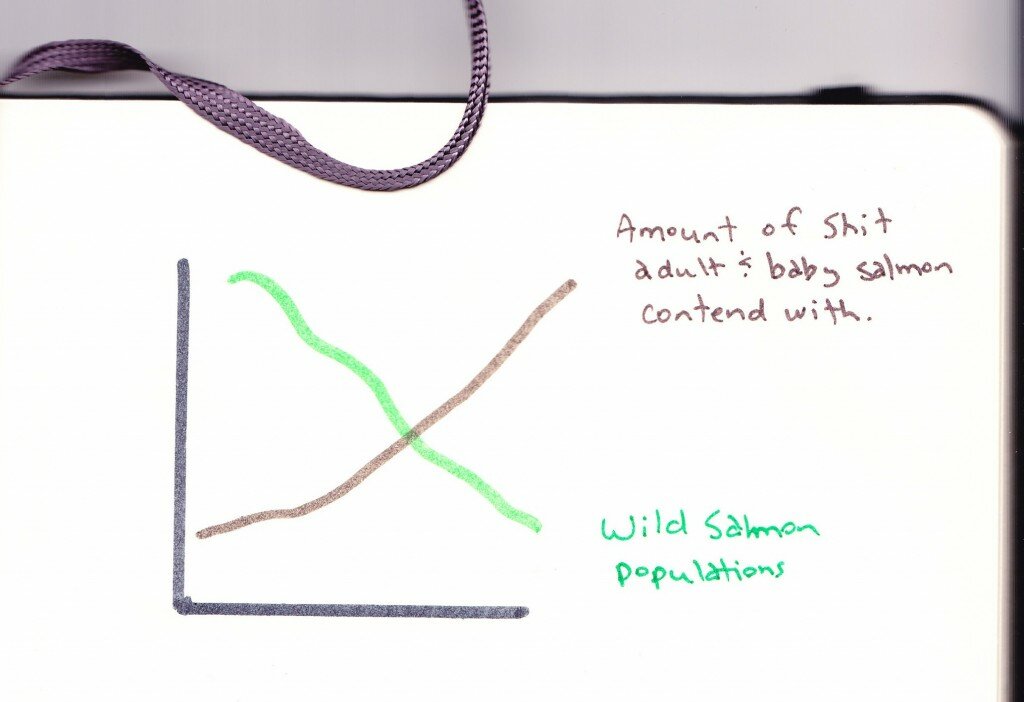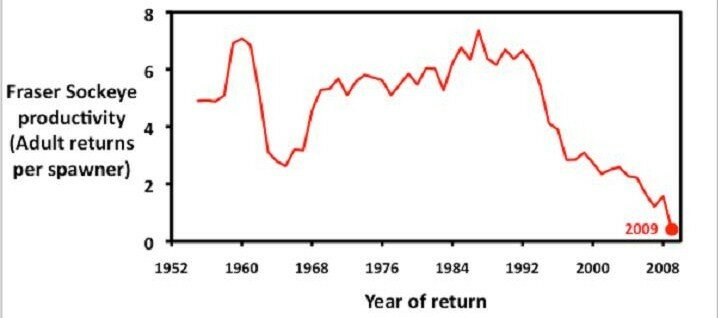Link to an article out of Oregon:
Apparently this year’s sockeye run on the Columbia is one of the best in quite some time, edging towards 330,000:
This is pretty decent news, and good for folks to be able to secure some income from selling fish.
However, there is a pretty key sentence that should keep things in perspective:
Before dams were built on the Columbia and Snake rivers, sockeye run estimates reached 3 million fish.
That was only about a human generation ago. In the late 1800s and early 1900s.
Similar story as the Fraser River sockeye. Estimates from the Fraser River suggest sockeye runs peaking at 160 million in the 1800s, and runs approaching 100 million in the early 1900s.
Last year… 1.3 million or so.
Before everyone starts getting too ecstatic, maybe numbers should be put in perspective. Department of Fisheries and Oceans also likes to put out graphs of Fraser sockeye populations that only go back as far as the 1940s as well.
A gentle reminder may need to accompany those numbers: in the 1940s world population was also only about 2.3 billion… it’s just under 7 billion now according to United Nations estimates in 2008.
The population of Oregon was a little over 1 million in the 1940s; it’s now about 4 million. Washington State was about 1.7 million; it’s about 6.7 million now. Seattle and metro areas were well under 1 million in the 1940s, they’re now approaching 3.5 million.
Vancouver, B.C. and metro area has grown from a few hundred thousand in the 1940s to over 2 million now.
_ _ _ _ _
Is there not a trend here?
Part of the problem (at least south of Alaska – however I won’t mention the preponderance of salmon ranching to support Alaskan salmon fisheries) is that the moment that salmon runs demonstrate a glimmer… a glint… a smidgen of positive news, government management institutions and lobby groups exclaim:
“LET’S GO FISHING!!”
And yet, many folks seem to have lost track of the historical – or just choose to ignore it. Not all that often do government reports, scientific research, or bureaucratic brethren draw the link between the trend lines I sketched above. At best, it gets passing mention…
And isn’t there another trend in here?
I recognize “shit” is not a very technical term… in this case it captures a wide classification including: shit-shit and the increases of which a much larger population excretes into waterways; prozac/ estrogen/cialis and other endocrine disruptors showing up in alarmingly increasing amounts in sewage treatment plants; “shit” in a figurative sense; and so on…
_ _ _ _
If salmon habitats (e.g. ocean and freshwater) are displaying lower productivity than in the past, for example, look at the Fraser River estimates of sockeye productivity (from the Pacific Salmon Commission and part of the late 2009 ):
Remember that for a population of almost anything… there must be at least two reproductive adults per “spawner” reaching sexual maturity — ideally one female and one male — to allow any critter to simply maintain a population, let alone provide for ‘growth’.
It might be suggested that at present productivity even a “record” sockeye run would not even reproduce the same size run in four years — even if left entirely alone.
For example, if 15 million sockeye showed up in the Fraser River this year, at a productivity of less than 1 adult returning per spawner — the run four years from now would not even be the same size; it would be smaller. And this… even if we leave the runs entirely alone (i.e. no fishing).
And thus on the Columbia, a “record” run of over 300,000 (despite recent historical runs over 3 million) and everyone wants to go fishing. I’ll quietly put in here that the cost of that 300,000+ return is massive… hatcheries, barging baby salmon past dams, habitat restoration, controlling dam flows, dismantling dams, and so on, and so on…
Will we see the same on the Fraser River this year?
Early indications suggest some higher than predicted run sizes, or at least in the lower probability range (as DFO likes to call it). Will there be a push to go fishing?
There is on the Skeena River (northwestern B.C.) right now… . Nothing like “harvestable surplus”…




